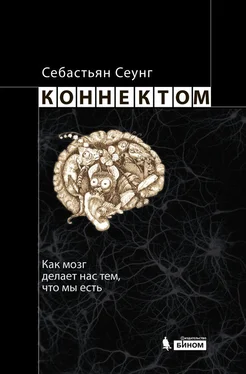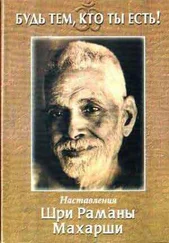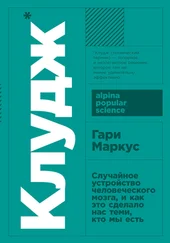241. Mochida, G. H., and C. A. Walsh. 2001. Molecular genetics of human microcephaly. Current Opinion in Neurology , 14 (2): 151.
242. Mochida, G. H., and C. A. Walsh. 2004. Genetic basis of devel opmental malformations of the cerebral cortex. Archives of Neurology , 61 (5): 637.
243. Mochizuki, H. 2009. Parkin gene therapy. P arkinsonism and Related Disorders , 15: S43-S45.
244. Mohr, J. P. 1976. Broca’s area and Broca’s aphasia. In Haiganoosh Whitaker and Harry A. Whitaker, eds., Studies in neurolinguistics , vol. 1, Perspectives in neurolinguistics and psycholinguistics, pp. 201–235. New York: Academi Press.
245. Mooney, R., and J. F. Prather. 2005. The HVC microcircuit: The synaptic basis for interactions between song motor and vocal plas– ticity pathways. Journal of Neuroscience , 25 (8): 1952–1964.
246. Morgan, S., P. Grootendorst, J. Lexchin, C. Cunningham, and D. Greyson. 2011. The cost of drug development: A systematic review. Health Policy , 100 (1): 4–17.
247. Murphy, B. P., Y. C. Chung, T. W. Park, and P. D. McGorry. 2006. Pharmacological treatment of primary negative symp toms in schizophrenia: A systematic review. Schizophrenia Research , 88 (1–3): 5–25.
248. Murphy, T. H., and D. Corbett. 2009. Plasticity during stroke recovery: From synapse to behaviour. Nature Reviews Neuroscience , 10 (12): 861–872.
249. Myrdal, G. 1997. The Nobel Prize in economic science. Challenge , 20 (1): 50–52.
250. Nehlig, A. 2010. Is caffeine a cognitive enhancer? Journal of Alzheimer’s Disease , 20 (Supp): S85–S94.
251. Nelson, S. B., K. Sugino, and C. M. Hempel. 2006. The problem of neuronal cell types: A physiological genomics approach. Trends in Neurosciences , 29 (6): 339–345.
252. Nestler, E. J., and S. E. Hyman. 2010. Animal models of neuropsychiatric disorders. Nature Neuroscience , 13 (10): 1161–1169.
253. Newhouse, P. A., A. Potter, and A. Singh. 2004. Effects of nicotinic stimulation on cognitive performance. Current Opi nion in Pharmacology , 4 (1): 36–46.
254. Nicolelis, M. 2007. Living with Ghostly Limbs. Scientific American Mind , 18 (6): 52–59.
255. O’Connell, M. R. 1997. Blaise Pascal: Reasons of the heart. Grand Rapids, Mich.: Wm. B. Eerdmans.
256. Oddo, S., A. Caccamo, J. D. Shepherd, M. P. Murphy, T. E. Golde, R. Kayed, R. Metherate, M. P. Mattson, Y. Akbari, and F. M. LaFerla. 2003. Triple-transgenic model of Alzheimer’s disease with plaques and tangles: Intracellular AŻ and synaptic dysfunction. Neuron , 39 (3): 409–421.
257. Olanow, C. W., C. G. Goetz, J. H. Kordower, A. J. Stoessl, V. Sossi, M. F. Brin, K. M. Shannon, G. M. Nauert, D. P. Perl, J. Godbold, et al. 2003. A double-blind controlled trial of bilateral fetal nigral transplantation in Parkinson’s disease. Annals of Neurology , 54 (3): 403–414.
258. Olshausen, B. A., C. H. Anderson, and D. C. Van Essen. 1993. A neurobiological model of visual attention and invariant pattern recognition based on dynamic routing of information. Journal of Neuroscience , 13 (11): 4700–4719.
259. Olson, C. B. 1988. A possible cure for death. Medical Hypotheses , 26 (1): 77–84.
260. Pakkenberg, B., and H. J. Gundersen. 1997. Neocortical neur on number in humans: Effect of sex and age. Journal of Compar ative Neurology , 384 (2): 312.
261. Passingham, R. E., K. E. Stephan, and R. Kötter. 2002. The anatomical basis of functional localization in the cortex. Nature Reviews Neuroscience , 3 (8): 606–616.
262. Paterniti, Michael. 2000. Driving Mr. Albert: A trip across America with Einstein’s brain. New York: Dial.
263. Paul, L. K., W. S. Brown, R. Adolphs, J. M. Tyszka, L. J. Richards, P. Mukherjee, and E. H. Sherr. 2007. Agenesis of the corpus callosum: Genetic, developmental and functional aspects of connectivity. Nature Reviews Neuroscience , 8 (4): 287–299.
264. Pearson, K. 1906. On the relationship of intelligence to size and shape of head, and to other physical and mental characters. Biometrika , 5 (1–2): 105.
265. Pearson, K. 1924. The life, letters and labours of Francis Galton . Vol. 2, Researches of middle life. London: Cambridge University Press.
266. Peck, D. T. 1998. Anatomy of an historical fantasy: The Ponce de León fountain of youth legend. Revista de Historia de América , 123: 63–87.
267. Penfield, W., and E. Boldrey. 1937. Somatic motor and sensory representation in the cerebral cortex of man as studied by electrical stimulation. Brain , 60 (4): 389.
268. Penfield, W., and T. Rasmussen. 1952. The cerebral cortex of man. New York: Macmillan.
269. Petrie, W. M. F. 1883. The pyramids and temples of Gizeh. London: Field & Tuer.
270. Pew Forum on Religion. 2010. Religion among the millennials. Technical report, Pew Research Center, Feb.
271. Plum, F. 1972. Prospects for research on schizophrenia, 3. Neurophysiology. Neuropathological findings. Neurosciences Research Program Bulletin , 10 (4): 384.
272. Poeppel, D., and G. Hickok. 2004. Towards a new functional anatomy of language. Cognition , 92 (1–2): 1–12.
273. Pohl, Frederik. 1956. Alternating currents . New York: Ballantine.
274. Porter, K. R., and J. Blum. 1953. A study in microtomy for electron microscopy. Anatomical Record , 117 (4): 685–709.
275. President’s Council on Bioethics. 2008. Controversies in the determination of death. Washington, D.C.
276. Purves, D. 1990. Body and brain: A trophic theory of neural connections. Cambridge, Mass.: Harvard University Press.
277. Purves, D., L. E. White, and D. R. Riddle. 1996. Is neural development Darwinian? Trends in Neurosciences , 19 (11): 460–464.
278. Purves, Dale, and Jeff W. Lichtman. 1985. Principles of neural development . Sunderland, Mass.: Sinauer Associates.
279. Quiroga, R. Q., L. Reddy, G. Kreiman, C. Koch, and I. Fried. 2005. Invariant visual representation by single neurons in the human brain. Nature , 435 (7045):1102–1107.
280. Rakic, P. 1985. Limits of neurogenesis in primates. Science , 227 (4690): 1054.
281. Rakic, P., J. P. Bourgeois, M. F. Eckenhoff, N. Zecevic, and P. S. Goldman-Rakic. 1986. Concurrent overproduction of synap ses in diverse regions of the primate cerebral cortex. Science , 232 (4747): 232–235.
282. Ramachandran, V. S., and S. Blakeslee. 1999. Phantoms in the brain: Probing the mysteries of the human mind. New York: Harper Perennial.
283. Ramachandran, V. S., M. Stewart, and D. C. Rogers-Ramachan dran. 1992. Perceptual correlates of massive cortical reo rganization. Neuroreport, 3 (7): 583.
284. Ramón y Cajal, Santiago. 1921. Textura de la corteza visual del gato. Archivos de Neurobiología , 2: 338–362. Trans. in DeFelipe and Jones 1988.
285. Ramón y Cajal, Santiago. 1989. Recollections of my life . Cambridge, Mass.: MIT Press.
286. Rapoport, J. L., A. M. Addington, S. Frangou, and MRC Psych. 2005. The neurodevelopmental model of schizophrenia: Update 2005. Molecular Psychiatry , 10 (5): 434–449.
287. Rasmussen, T., and B. Milner. 1977. The role of early left-brain injury in determining lateralization of cerebral speech functions. Annals of the New York Academy of Sciences , 299: 355–369.
288. Redcay, E., and E. Courchesne. 2005. When is the brain en larged in autism? A meta analysis of all brain size reports. Biological Psychiatry , 58 (1): 1–9.
289. Rees, S. 1976. A quantitative electron microscopic study of the ageing human cerebral cortex. Acta Neuropathologica , 36 (4): 347–362.
Читать дальше
Конец ознакомительного отрывка
Купить книгу




![Рейчел Херц - Почему мы едим то, что едим [Наука о том, как наш мозг диктует нам, что есть]](/books/390411/rejchel-herc-pochemu-my-edim-to-chto-edim-nauka-o-t-thumb.webp)
![Алан Джасанов - Мозг - прошлое и будущее [Что делает нас теми, кто мы есть]](/books/401119/alan-dzhasanov-mozg-proshloe-i-buduchee-chto-delaet-thumb.webp)






